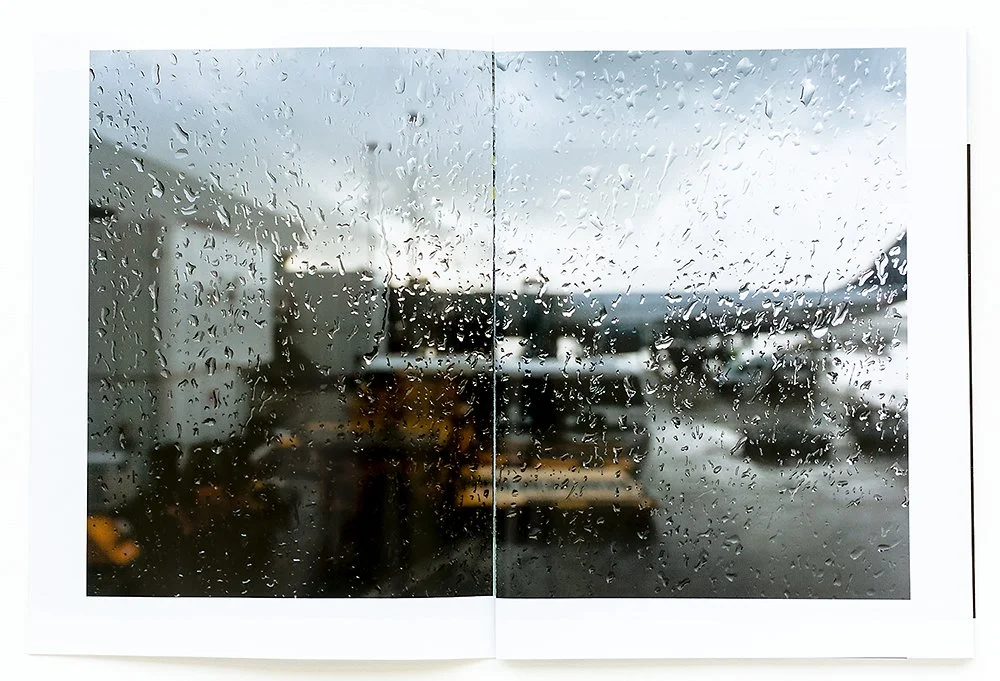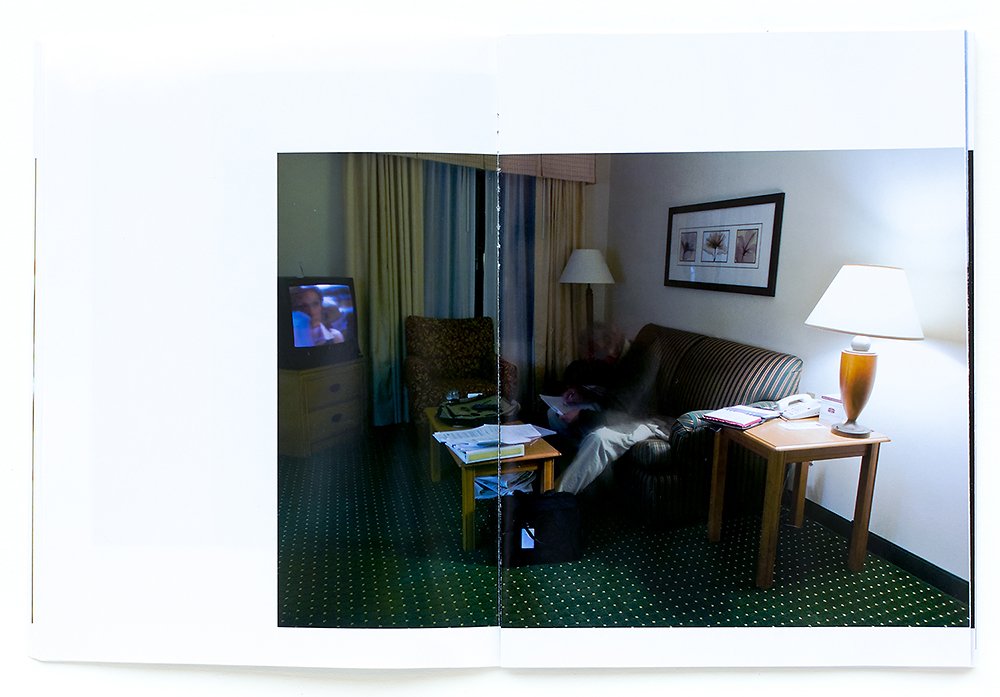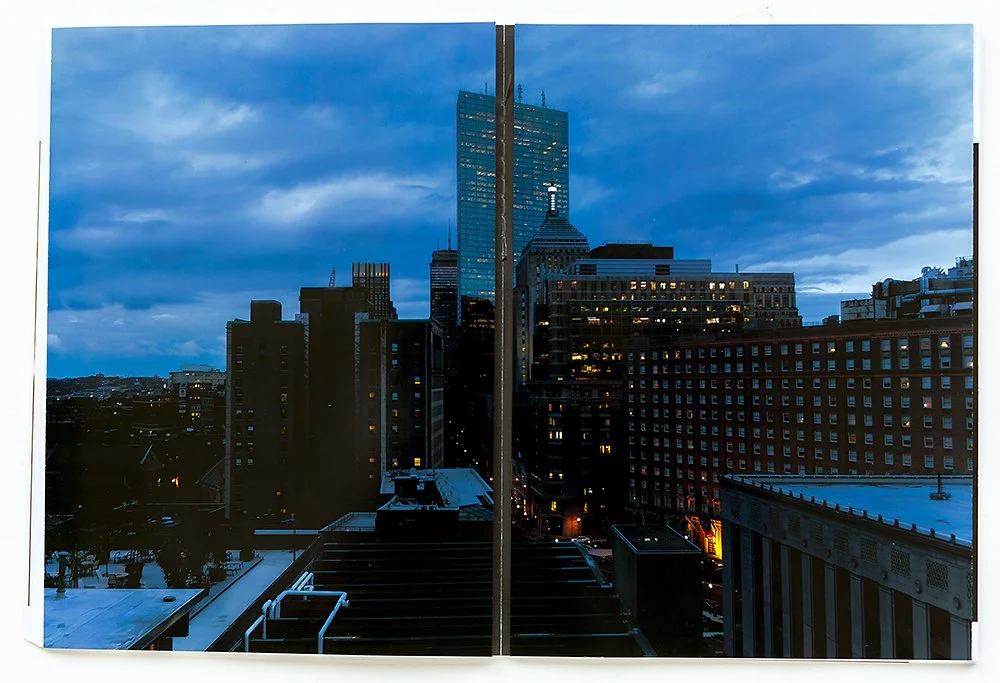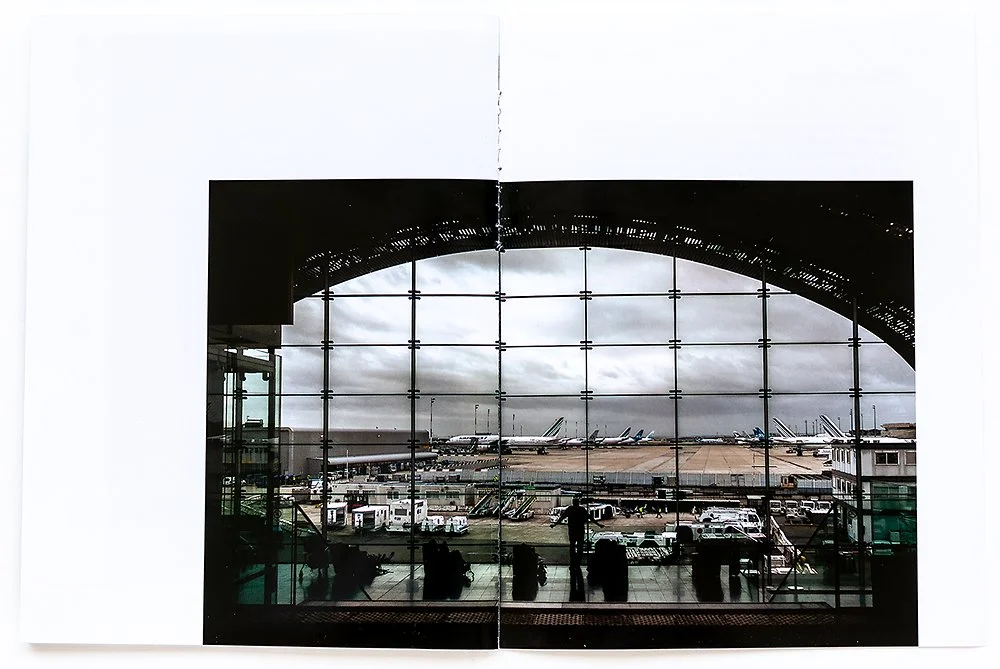Poignant Pics no. 73: On Douglas Stockdale’s “The Flow of Light Brushes the Shadow”
Welcome to no. 73 in our series Poignant Pics, where our editor, Diana Nicholette Jeon, writes about Douglas Stockdale’s book, “The Flow of Light Brushes the Shadow.”
“Travelling- It leaves you speechless, then turns you into a storyteller.” — Ibn Battuta
This Poignant Pics is a bit different than usual because I'm featuring a book, The Flow of Light Brushes the Shadow, by Douglas Stockdale, instead of an image.
I wanted to know why this book about travel, and why now–as we recover after the pandemic closures and the travel industry struggles to get back to business 'as usual.' I learned this book had been 15 years in the making! Stockdale told me, "My understanding of what the photographs might represent was difficult to come to grips with. Until recently, I lacked the cohesive glue to bring the work together. Paradoxically this was also related to the pandemic, as it has been a source of increased anxiety for many. It led me to find out what was going on for me."
While obviously about business travel, the actual topic of the book is not as straightforward as it looks at first glance. It's not until the textual conclusion that Stockdale reveals the more profound subject, anxiety, causing the imagery to read on an additional level. It appeared to be a deliberate choice, so I asked Stockdale what lay behind that decision. "I was thinking about lessons learned from my past artist books and recent discussions with a curator friend–sometimes conceptual artwork requires a narrative. I preferred the reader to experience that context after experiencing the photographs."
Though Stockdale approached the topic of business travel from an introspective stance, he was still surprised by how deeply reflective the resulting work would become. "Once I had realized I was experiencing low-level anxiety brought on by extensive travel alone, it required an entire do-over of the book-dummy. As you might imagine, the entire concept and reason for the book flipped."
As editor of PhotoBook Journal, Stockdale has spent significant time reviewing artists and photo books created by others. Therefore, he is well aware of how details are crucial to supporting and furthering a book's concept or how they detract from it. Stockdale keeps a file of attractive book ideas that underscore an artist's narrative. He decided to make a hybrid book, to give the reader both the surprises of an artist's book and the affordability of a trade book.
The 'aha! moment' came after Stockdale learned the reasons underlying his anxiety, especially the various manifestations of this mental health condition. That was the missing glue that ultimately transformed his presentation of the photographic narrative to its final form. Influences included books like Patterson's Redheaded Peckerwood (2011) and de Middel's Afronauts (2012.)
The book's narrative is mussy; it has dangling ends. That's intentional. Stockdale wanted to incorporate features that subtly cue the viewer about anxiety as a health condition. It also reminded me of work covered at a breakout talk at the 2019 College Book Arts Conference entitled "Hacking the POD Book." Concurrently, it's far too handmade to be that, exactly, either. I asked Stockdale about this, and he told me, "Photographic books are usually grouped into two distinct camps, either high volume offset litho printing (aka trade book) or a low volume handmade artist book. What has intrigued has been how some artist books incorporated handmade book attributes into a high-volume trade book."
The internal text block was printed on a high volume offset litho commercial press, which Stockdale finds provides higher quality printing than a digital litho press. The book also has a center double gatefold, which is too large for digital litho processes. The handmade sections include a pigment-printed four-page interior spread and a cover with translucent vellum that French-folds over it. Each book also incorporates a signed open-edition archival pigment image. Stockdale further supported his narrative via pamphlet stitch binding that he modified, allowing the remaining threads to hang free. He stated, "The design concept is that the loose threads represent the loose ends of the book's narrative, that anxiety is not neat and tidy, its complex and layered, which can go in and out of focus depending on how you handle it." As an example of his use of metaphor via the construction, he used the double-layered cover to simulate that specific aspect of anxiety. The bound, unprinted medium-weight translucent vellum sheet reflects Stockdale's experience: "Depending on how you hold the book, the underlying title page will move in and out of focus as it contacts the vellum. That's similar to the ongoing issues dealing with anxiety; some days and times are better than others in keeping life in focus."
I also inquired about the differences between the Artist Special Edition and the Artists Book. The Special Edition includes a favorite image not included in the book. An early morning staged photograph created while staying in the French village of Vernouillet, it's a limited edition printed on a heavyweight Baryta paper in archival pigment. Stockdale feels it visually discloses elements of his anxiety: the individual isolation, the emotional duality of being in a dark interior vs. the sunlit exterior, with his blurred features alluding to the morning anxiety he frequently confronts. It also uses a black waxed Irish linen thread instead of the dark blue thread of the regular edition and incorporates a red ink Chinese chop mark with the Mandarin phrase "Liu Guan Lue Yin." Stockdale said, "This is the original phrase I heard in Shanghai that translates into my English title, 'The Flow of Light Brushes the Shadow.'"
I found the book a compelling hybrid of the handmade and the commercially printed. Stockdale takes us along with him on his travels, literally and metaphorically, allowing us to experience his highly personal journey. The interplay of crisp imagery with slow shutter work underscores anxiety's creeping and elusive nature. The genre of part catharsis/part therapy is one I understand and treasure; my work so obviously reflects my life struggles and experiences similarly.
Bravo, Douglas, on a work done well. Thank you for taking the time to talk with me.
[clicking on an image will bring up a lightbox]
Artist Bio
Douglas Stockdale, b. 1949, Pennsylvania (American) is a visual artist located in Southern California and the Senior Editor & founder of PhotoBook Journal, the contemporary photobook review magazine. He is on the adjunct faculty of the Los Angeles Center of Photography (LACP), Medium Photo Festival (San Diego, CA), and SouthEast Center for Photography (SEC4P, Greenville, SC). Previously Stockdale was a portfolio reviewer for LensCulture and a photobook reviewer for photo-eye magazine. Stockdale is represented by Fabrik Projects (Los Angeles, CA.) Stockdale has a Masters from the University of La Verne, California, and an undergraduate degree in design from Michigan State University.
More of his work can be found at https://www.douglasstockdale.com/ and his personal art-photo-blog Singular Images.
Author Bio
Diana Nicholette Jeon is an award-winning artist based in Honolulu, HI, who works primarily with lens-based media. Her work has been seen both internationally and nationally in solo and group exhibitions. Jeon holds an MFA from UMBC.











